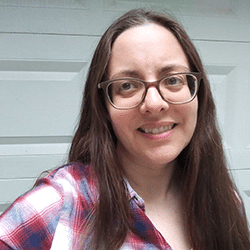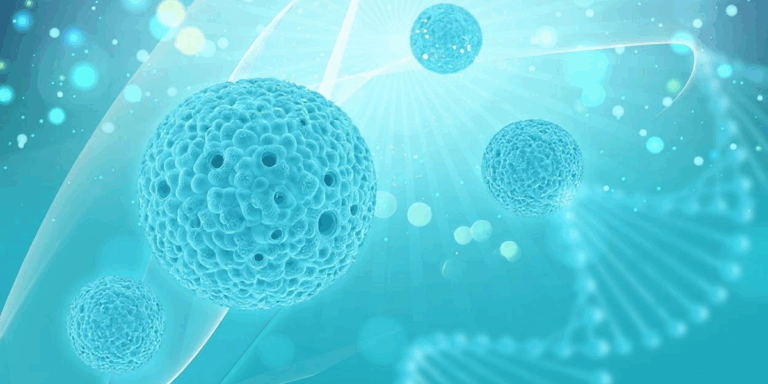Collecting biological samples in the field can be difficult, since storage conditions outside of the lab are often less than optimal. Enter the Whatman FTA (Flinders Technology Associates) Cards.
The Whatman FTA Card, a filter paper product manufactured by GE Health Care, is a paper matrix laced with a proprietary mixture of chemicals that lyse cells and stabilize nucleic acids on contact for long term storage at room temperature.
FTA cards are typically used when storage space and freezing capacity on the sample collection end of a given project is limited or non-existent, because they can be stored in boxes, bags, drawers, or even sent through the mail without ice.
Overview
Both mammal and plant tissues can be “imprinted” on the cards simply by pressing the material onto the sample spotting area. Saliva, blood, mucus, cerebral spinal fluid, and any other fluid of interest can be spotted onto the cards at a volume of up to 125 microliters, depending on the type of FTA card you are using. Once the cards are dry, they can be stored at room temperature for up to several months (Whatman’s site claims years, but I am skeptical) before attempting to extract the DNA or the RNA from the sample.
To extract the nucleic acids, you first need to take a punch of the card where your sample is imprinted. The Harris micropunch, though expensive, is quite popular. Others have found that sterilized scissors and forceps, rinsed with ethanol and flamed between samples, are effective. A metal hole puncher purchased from a craft store is also a possibility.
Some researchers say that, while the FTA cards are convenient on the sample collection end, the downstream processing is often not as pleasant. In particular, it is not likely that you will be able to recover 100% of the nucleic acid from your sample, so optimizing your extraction protocol should aim to maximize recovery.
Extracting nucleic acids from FTA cards
Whatman publishes a few protocols for extracting nucleic acids from the FTA Cards, which are available for free online, like this one for DNA or this one for RNA, although their official protocol page is not that helpful. You can also try DIY methods or commercial kits.
No matter how you slice it, most protocols fall into two categories: Direct-to-PCR and Elution.
- Direct-to-PCR
In the direct-to-PCR protocol, a single 1-2 mm punch is removed from the sample area with a sterilized micropunch, washed with detergent, rinsed with buffer, and then dried on a heat block according to a standard protocol. The paper punch can then be added to the PCR tube as the template and amplified as usual. When followed exactly as written, this protocol is simple and requires very few steps. Whatman sells a proprietary card-washing reagent which is quite expensive, and the literature shows mixed success using SDS as a substitute. Whatever you choose, it should be able to wash away proteins and other chemicals and denature nucleases.
- Elution of Nucleic Acid From the Card
For very concentrated samples, elution is not much more difficult than a direct-to-PCR protocol. Things like cheek swabs, blood spots, and other sample types with large quantities of DNA can be extracted using commercial kits or Whatman protocols. The company even sells a type of “FTA Elute” card specifically designed for elution protocols rather than direct-to-PCR.
However, for projects where the samples are very dilute and the entire sample area needs to be processed (instead of just a few punches), protocol optimization becomes more complicated. Consider the challenges in processing large quantities of paper:
- Volume
The amount of elution buffer required to fully submerge the paper can be at odds with the size of the tube, especially if you plan on ethanol precipitating and concentrating the nucleic acid later. That requires double the sample volume of ethanol achieve, so make sure you leave enough room! Some researchers solve this by using concentrator tubes or processing the paper directly in kits that employ the bind-wash-elute column method, but that can be expensive.
- Number of steps
It also helps to reduce the number of steps, including tube transfers, to minimize loss of product. Many kits with built-in card protocols allow you to put the paper directly into the elution medium (usually a buffer, a detergent, and proteinase K) rather than washing and drying it first. Our lab prefers kits that allow elution in very small volumes for samples of low concentration. Incubating the tubes on ice and avoiding agitating the tubes during the wash steps can help reduce product loss.
- Handling
In non-column protocols, sometimes the vortexing or shaking necessary to elute the nucleic acid can also start to break down the paper, leaving behind paper fuzz in the tube. The paper fuzz usually does not end up in the final eluate in kits with micro-column methods, but it can be frustrating when attempting to purify nucleic acid by ethanol precipitation after using a non-kit elution protocol. Some paper fuzz is usually left behind, even if you try to spin it out and transfer the supernatant to a new tube, not to mention that transferring to a new tube introduces an opportunity for product loss. Leaving the fuzz behind tends not to interfere with PCR reactions, but it does make the ethanol wash take longer to evaporate from the tube, increasing the risk that you will either contaminate your samples or incompletely dry them.
Other Complications
Another downside to the FTA cards is that they are easy to contaminate, especially with sensitive projects involving deep sequencing and metagenomics, which are already very sensitive to small amounts of contamination. FTA cards might not be ideal for these types of projects. Touching the sample spotting area with fingers or improperly sterilized tools can introduce environmental contaminants, as can handling the cards in open air on a lab bench. It is best to process them with a flame going overhead or under a fume hood. In general, you should never handle the cards with anything but very clean gloves and tools and never touch the sample spotting area.
It is essential to keep the cards dry in storage. They are sensitive to picking up moisture from their environment. Store each card or group of cards of the same sample in their own plastic bag along with a desiccant. Whatman sells envelopes that match the sizes of cards they have available, but I have found that the plastic bags previously used to package 0.2 uL PCR tubes work just as well.
Conclusions
As a beginner, I overwhelmingly prefer the kit methods and the Harris punch. They have given me the highest recovery for the shortest amount of time and the fewest steps compared to the non-kit methods, but those with more finesse from years of laboratory experience may prefer to save some money eluting and purifying the old fashioned way. Contamination is still a big headache, but it can be circumvented with very meticulous handling.
In the end, the protocol you choose is greatly dependent upon the type of starting material, the desired concentration of your end product, your budget, and the skill of the person performing the extraction to make the best use of this potentially handy technology.




